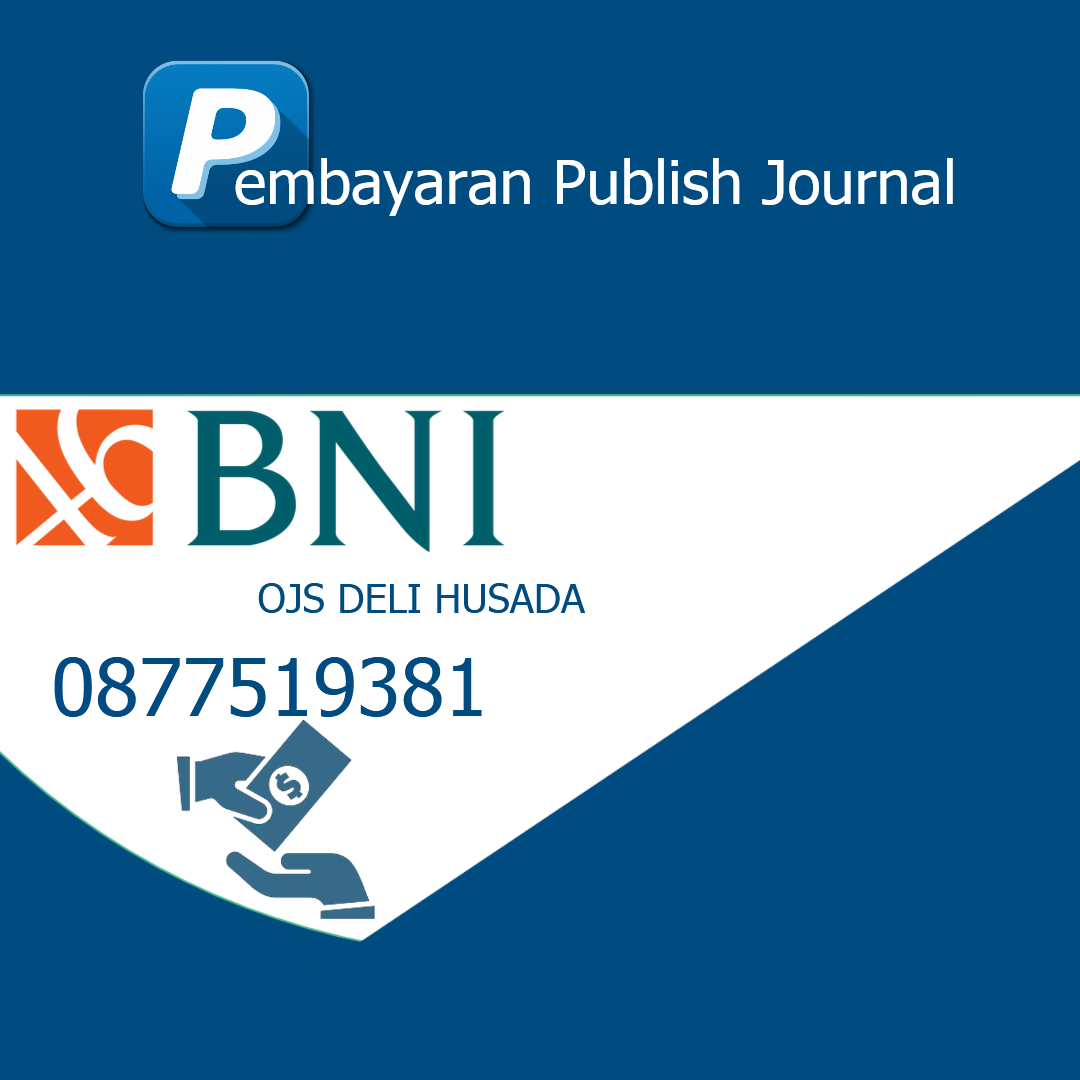PENGARUH PEMBERIAN EFFLEURAGE MASSAGE MENGGUNAKAN ESENSIAL OIL SERAI (CYMBOPOGON ) UNTUK MENURUNKAN NYERI PUNGGUNG PADA IBU POST PARTUM DI KLINIK LINDA YUSNANI MEDAN TEMBUNG KOTA MEDAN
Abstract
Abstrack
Objective: Post partum is the period after childbirth can also be called the puerperium (puerperium) which is the period after childbirth which is treated for the restoration of the uterus for a duration of 6 weeks. Post partum is a period of 6 weeks from the birth of the baby until the reproductive organs return to their normal state before pregnancy. So it is necessary to do relaxation techniques on the mother to overcome the pain experienced by the mother. In this study, researchers have performed an Effleurage Massage using Lemongrass Essential Oil (Cymboppogon) on post partum mothers at Linda Yusnani Clinic, Medan Tembung. Relaxation was given to 15 post partum mothers as respondents in this study. Giving Effleurage Massage using Lemongrass Essential Oil (Cymboppogon) was carried out according to the procedure for the mother and the researchers did it for 3 days with a frequency of once a day, morning, afternoon and evening.
Methods: this study was conducted for 3 days after birth. This type of research is Pre Experimental and uses a one group pretest-posttest research design. The population is post partum mothers who experience back pain, totaling 15 post partum mothers. This study uses a total sampling technique.
Results: Collecting data through questionnaires and observation. The results of data analysis with the Wilcoxon test result p = 001 which means that there is an effect of giving effleurage massage using lemongrass essential oil (cymbopogon) to reduce back pain in postpartum mothers.
Conclusion: effleurage massage combined with lemongrass essential oil can be applied to postpartum mothers who experience back pain, resulting in a decrease in back pain in postpartum mothers.
References
Setyo Retno Wulandari Dan Sri Handayani (2011). Buku Asuhan Kebidanan Ibu Nifas . Colomadu, Jawa Tengah.
Ida Widiawati, Sri Mulyati (2021). Effleurage Massage Menggunakan Essensial Oil Serai (Cymbopogon Sp) Dan The Sereh Efektif Untuk Menurunkan Nyeri Pada Ibu Post Partum. Jurnal Riset Kesehata.
Hennawati,Fazdria,Jasmiati (2022). Effleurage Massage Dan Tarik Nafas Dalam Dengan Aromaterapi Terhadap Penurunan Rasa Nyeri Post Partum Paada Ibu Multipara. Jurnal Kebidanan Malahayati.
Tina Shinta Parulian, Junatri Sitompul, Anne Nur Oktrifiana (2014). Pengaruh Effleurage Massage Terhadap Penurunan Rasa Nyeri Pada Ibu Post Partum Rumah Sakit Sari Ningsih, Bandung.
Ashar Novrida Irda, Dkk, (2018). Pengaruh Effleurage Massage Terhadap Penurunan Rasa Nyeri Pada Ibu Post Partum Multipara (Jurnal Kesehatan). Program Pascasarjana Terapan Kebidanan Stikes Dharma Husada Bandung.
Walyani SE, Purwoastuti E Asuhan Kebidanan Masa Nifas Dan Menyusui. Yogyakarta: Pustaka Baru Press; 2017.
Aswitami, N.G.A.P., Dan Mastiningsih, P. 2018. Pengaruh Terapi Akupresur Terhadap Nyeri Punggung Bawah Pada Ibu Hamil TM III Di Wilayah Kerja Puskesmas Abian Semal 1. STRADA JURNAL ILMIAH KESEHATAN. 7(2): 47-51.
Fatmawati. (2017). Efektifitas Massage Effleurage Terhadap Pengurangan Sensasi Rasa Nyeri Persalinan Pada Ibu Primipara. Journal Of Issues In Midwifery.
Alibab 2019, Kapasitas Produksi Minyak Sereh Wangi, Dilihat 21 Oktober 2019.
Sofiyanti I .2017. Penatalaksanaan Nyeri Punggung Pada Ibu Hamil. Prosiding Seminar Nasional Kebidanan Dan Call And Paper Volume I, Prodi D IV Kebidanan Fakultas Ilmu Kesehatan Universitas Ngudi Waluyo.
Anggraini, Y. 2011. Asuhan Kebidanan Masa Nifas . Yogyakarta: Pustaka Kihama.
Aprilia,Y. 2011 .Melahirkan Nyaman Tanpa Rasa Sakit. Jakarta : Pt Gramedia Widia Sarana Indonesia.
Ayu Ning Tyas Ika. 2019. Kebidanan Komplementer Terapi Komplementer Dalam Kebidanan. Yogyakarta: Pustaka Baru Press.





